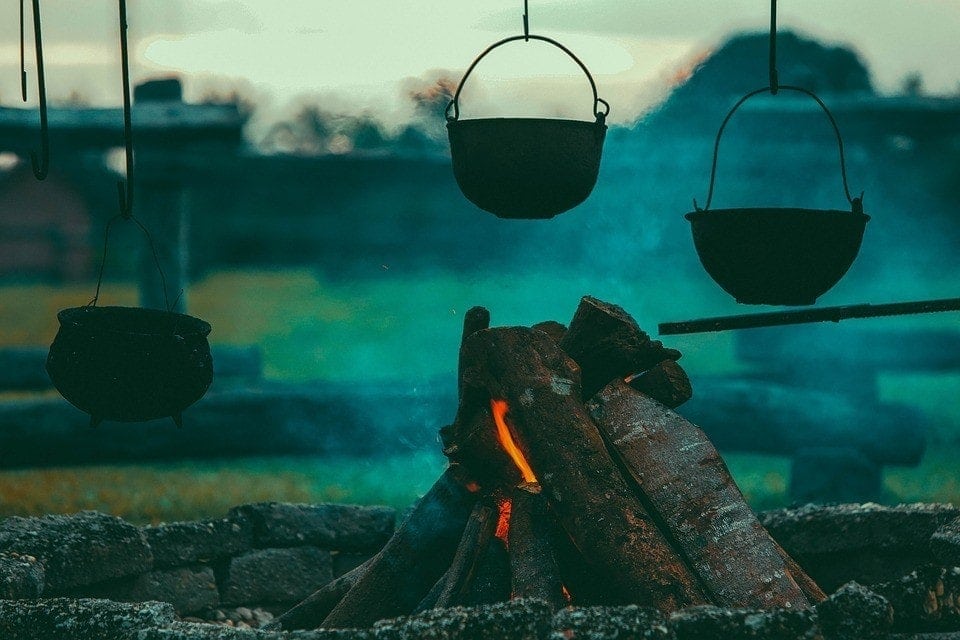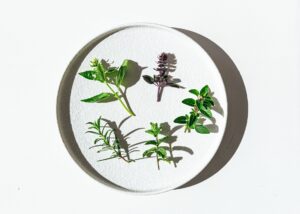Effects of cooking on fats
We ought to know that butter should not be heated above 120 °C (248 °F), and vegetable oils generally should not be heated above 170 °C (338 °F). Coconut oil can even be heated up to 200 °C (392 °F).
Hard fats that are indigestible when cold are mutton fat or hydrogenated coconut oil. Although they are finely broken down during chewing and thus more digestible, they line the stomach wall and thereby reduce the secretion of gastric juice. For this reason, too, the proportion of fat in a person’s overall daily diet should be no more than 10 to 12% and should certainly not be around 40%, as is often the case in modern diets.
Spices such as ginger and pickle or sauerkraut can help digest an excess of fats more easily.
Effects of cooking on minerals and trace elements
One cannot really speak of a chemical effect on these substances, the loss of minerals and trace elements depends mainly on the amount of cooking water used. Extraction can actually take place, so that some of them can be found in the cooking water, which can be advantageously reused for the preparation of sauces or soups, so that in general there is no loss. It is therefore recommended that vegetables in particular be boiled in a small amount of water, i.e. either steamed or prepared in a pressure cooker. Not the absolute calcium and magnesium content, but their salts can change slightly; the result is a hardening of the vegetables because calcium and magnesium carbonates precipitate. The digestibility is slightly reduced.
Effects of cooking on vitamins
Especially when it comes to vitamins, cooking is always suspected of causing losses. Let us examine objectively how this is in reality.
As far as the fat-soluble vitamins A, D, E and K are concerned, there is hardly any loss during household cooking, mainly because vegetables primarily contain beta-carotene, i.e. provitamin A; here there is generally a loss of 10%. And also because there are other vitamins present, such as vitamin E, which acts as an antioxidant. The thermal transformation during cooking is less damaging to the vitamins than oxidation.
This is particularly true of vitamin A in butter and cooking oils when heated to 120 °C (248 °F) or more.
Vitamins E, D and K are very heat-resistant and therefore boil-proof
As for the group of water-soluble vitamins, the problem is twofold. First, there is the fact that they are dissolved; the more cooking water is used, the more these vitamins are extracted. The only way to remedy this is to cook with as little water as possible or without any water at all. Vitamins B1, B2 and C are the most sensitive of all water-soluble vitamins to heat and oxidation.
Vitamins B1 and B2 are not resistant to heat, but this depends on the time. In any case, it is better to cook for a short time than to cook for a longer time at a low temperature.
We find that neither a 13 to 15% loss for vitamin B1 nor a 1 to 12% loss for vitamin B2 is a serious loss that could have adverse consequences. I would like to take this opportunity to remind you that sifting out wholemeal flour in the production of white flour means a loss of 67.7% of vitamin B1 and 56.25% of vitamin B2! It is easy to see that the consumption of such refined products causes deficiency symptoms in the long run, which can cause pathological conditions.
Vitamin C is generally believed to suffer most from cooking. It is certainly the one of the vitamins that is most sensitive to oxidation with the oxygen in the air and to enzymatic oxidation, especially in connection with iron. Brief blanching prevents further action of the oxidases and thus slows down this form of destruction.
The different types of cooking
You should only roast in the oven occasionally, as this type of preparation has a very astringent effect (yang) and may remove too much water. In any case, you have to vary the method of cooking according to the respective circumstances: for children and old people, for example, you can cook yin, for example with a pressure cooker or by adding a little water or even boiling in water.
Microwave ovens are not recommended; the microwaves cause an imbalance in the form of accelerated movement in the molecules of the nutrients, which lose their dynamizing value. Some people are able to feel this directly without knowing beforehand how the food in question was cooked or reheated.
The functional principle of the microwave is based on bombarding the food with electromagnetic (micro) waves at a frequency of 2,450,000,000 / second. The vibrations of these waves cause the water molecules (which are either contained in the food or have been added in the form of water) to move in such a way that their mutual friction causes a rise in temperature up to boiling. The speed of this molecular movement depends on the conductivity of the substances concerned; therefore, the microwave dishes will remain cold (apart from the heat transmitted through the cooked contents).
It is precisely this type of arrangement that determines its inherent lively character. It is easy to see that 2,450,000,000 vibrations per second completely shake up this wonderful arrangement and thus actually make the food unsuitable for the needs of its consumer. This disturbance and devitalization are not so quickly noticeable in healthy people, although they too feel the consequences; in sick people the situation is different. In patients with multiple sclerosis, for example, the effects can be seen immediately; even the use of an electric stove is not advisable for these patients.
These electromagnetic microwaves are very dangerous; they penetrate the skin and burn the muscles, the eyes are particularly at risk. For this reason, the manufacturer provides microwave ovens with a triple fuse, which only allows the door to be opened when no more microwaves are emitted. However, with constant use, the door’s hermetic seal can leak over time, and such leaks are dangerous if someone is near the microwave.
Kitchenware
The saucepans should be made of stainless metal (inox steel) or cast iron. Pyrex pots or containers made of (unglazed) terracotta are most suitable, because they are completely without taste. Although one often hears the opposite, aluminum is not recommended; some people react very sensitively to the various aluminum salts that can form (especially in an alkaline environment) and that may even cause serious stomach problems. Coated pots and pans should not be used. Mostly it is coated with polytetrafluoroethylene, which in itself is not hazardous to health, but definitely contains a certain proportion of toxic monomers that gradually dissolve and poison the food. In addition, these coatings are only heat-resistant up to 240/250 °C (464/482 °F), a temperature that can easily be reached when cooking on gas; toxic derivatives are then formed because the polymer itself is attacked.







